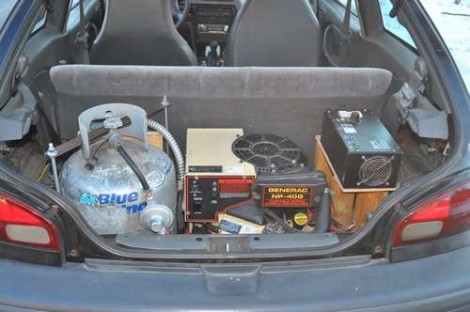
Usually we don’t like to feature projects that have zero build details, saving them instead for a links post. But this steam-powered bicycle is too… peculiar to pass up. In between the rider’s legs is the firebox that contains a wood-fueled fire. Watch the clip after the break and you’ll find just how noisy this contraption can be. In addition to the mid-range “chug-a chug-a” there’s also the constant whistle we’d attribute to the pressure regulator. It’s surprising that the whole bike doesn’t heat up, but it must not be all that bad since the test pilot isn’t wearing asbestos pants. All kidding aside, it looks like this beast has no problem getting up to a running pace (based on the movements of the camera) and that’s thanks to a renewable energy source.
We’d be much more comfortable seeing this in a mechanized tandem form factor since we just can’t get over having a fire between our legs.
Continue reading “Steam Cycle Feels Like Your Pants Are On Fire”
















